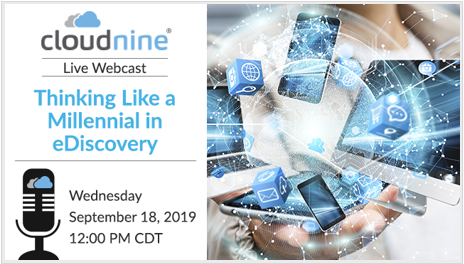DOS and DON’TS of a 30(b)(6) Witness Deposition, Part Two
Editor’s Note: Tom O’Connor is a nationally known consultant, speaker, and writer in the field of computerized litigation support systems. He has also been a great addition to our webinar program, participating with me on several recent webinars. Tom has also written several terrific informational overview series for CloudNine, including his most recent one, What is the Future of the Legal Technology Conference? Now, Tom has written another terrific overview regarding the state of legal technology conferences titled DOS and DON’TS of a 30(b)(6) Witness Deposition that we’re happy to share on the eDiscovery Daily blog. Enjoy! – Doug
Tom’s overview is split into six parts, so we’ll cover each part separately. The first part was Monday, here’s the second part.
Initial Considerations
Notice that the rule requires simply that the responding party must designate someone to testify on behalf of the business entity and not that the requesting party can specify the identity or even the position in the organization of the witness. It is also commonly interpreted by responding parties that they are not necessarily required to produce for deposition the most knowledgeable person in the organization but rather, anyone of their choosing who agrees to testify.
Since this means the witness will testify as the organization’s knowledge, not his or her own personal knowledge on the subject of the deposition, the obligation to educate the witness on the requested topics falls to the organization.
The key for the requesting party to ensure specificity during the deposition is the crafting of the notice of deposition. It should include specific topics to be covered at the deposition which are “reasonably particular” as the rule states but not be so detailed that objections can be raised during the deposition that a question or questions being asked was not part of the deposition notice.
The timing of the 30(b)(6) deposition is important. If taken at the beginning of the case, it may helpful to pinpoint issues for further discovery, such as detailing policies or procedures that can help define requests for production. But a deposition taken later, say after document productions, can fill in gaps or answer questions raised by the documents themselves or even identify further fact witnesses to answer those questions.
Once the deposition has begun and it becomes clear that the witness is not able to testify about the topics in the deposition notice, a decision must be made to establish either that this is not the proper witness to testify on the requested issues or merely demonstrate that the witness is not knowledgeable on the issues. The difference is whether you intend to seek a motion to compel the appearance of a different witness or alternatively preclude the organization from introducing testimony on these areas at trial.
On occasion, the witness is evasive or even outright hostile. This may be simply because the IT person designated to testify is not well prepared as noted above. But it may also be that the witness is not happy about having to testify, feels they are overqualified to testify and are being forced to deal with people who know less than he does or, in some rare cases, is part of a corporate document management strategy designed to specifically preserve and produce documents in only one specific manner. Here’s a link to the outline of a CLE session presented by Chris Ralston, a senior Commercial Litigation Partner at Phelps Dunbar in New Orleans, and me, dealing with such a hostile witness.
We’ll publish Part 3 – Proposed Rule Change – on Friday.

So, what do you think? Have you ever been a 30(b)(6) deponent? Or been involved in preparing one for testimony? As always, please share any comments you might have or if you’d like to know more about a particular topic.
Sponsor: This blog is sponsored by CloudNine, which is a data and legal discovery technology company with proven expertise in simplifying and automating the discovery of data for audits, investigations, and litigation. Used by legal and business customers worldwide including more than 50 of the top 250 Am Law firms and many of the world’s leading corporations, CloudNine’s eDiscovery automation software and services help customers gain insight and intelligence on electronic data.
Disclaimer: The views represented herein are exclusively the views of the author, and do not necessarily represent the views held by CloudNine. eDiscovery Daily is made available by CloudNine solely for educational purposes to provide general information about general eDiscovery principles and not to provide specific legal advice applicable to any particular circumstance. eDiscovery Daily should not be used as a substitute for competent legal advice from a lawyer you have retained and who has agreed to represent you.










